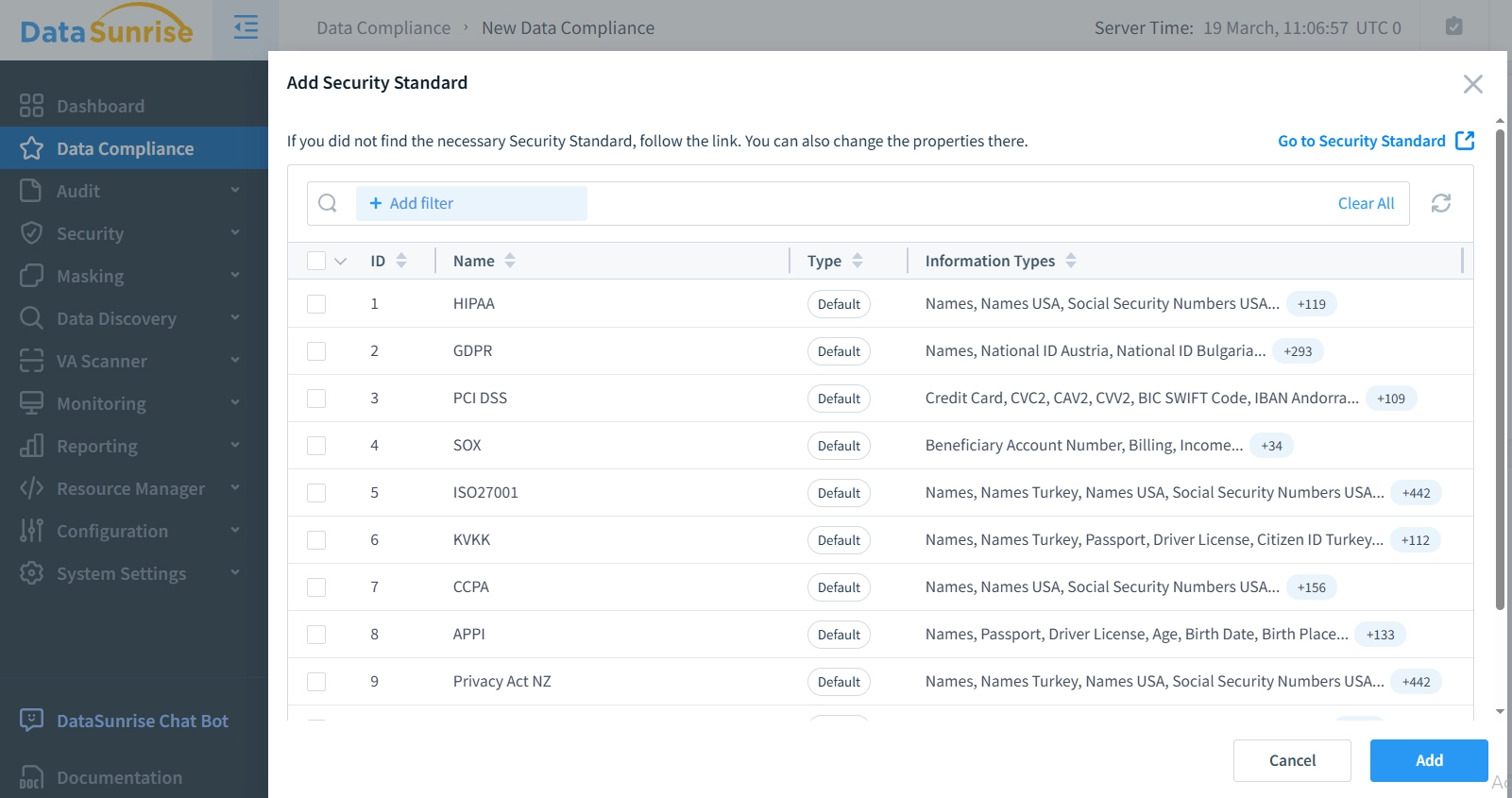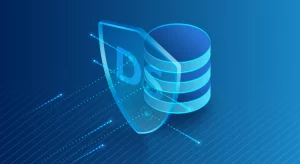Effortless Data Compliance for Snowflake
In today’s data landscape, implementing effortless compliance for Snowflake has become a critical business priority. According to Forrester’s 2025 Data Governance Report, organizations deploying automated compliance solutions identify vulnerabilities 96% faster and reduce compliance-related costs by up to 63%. With enterprises facing an average of 39 regulatory changes weekly, manual approaches cannot keep pace with evolving requirements.
This article explores how DataSunrise deploys dynamic data masking to deliver seamless regulatory alignment with No-Code Policy Automation for Snowflake environments. As organizations increasingly migrate to Snowflake’s data platform, implementing robust data compliance becomes essential for maintaining security and regulatory adherence.
Snowflake Compliance Challenges
Snowflake environments face several distinct compliance complexities:
1. Multi-Jurisdictional Data Storage: Different regulatory frameworks apply simultaneously across regions, creating overlapping requirements that demand intelligent controls.
2. Hybrid Environment Complexity: Organizations need database security when Snowflake coexists with other database systems.
3. Dynamic Access Patterns: Snowflake’s flexible consumption model creates complex access patterns that static rules cannot effectively govern.
4. Continuous Compliance Requirements: Regulations like GDPR, HIPAA, and PCI DSS evolve frequently, requiring Continuous Regulatory Calibration.
5. Comprehensive Audit Requirements: Regulatory frameworks demand audit logs with complete visibility into all data activities.
Native Snowflake Compliance Capabilities
Snowflake provides several built-in features for compliance:
1. Role-Based Access Control
-- Create roles with specific compliance responsibilities CREATE ROLE data_governance_officer; CREATE ROLE compliance_administrator; -- Grant appropriate permissions GRANT SELECT ON DATABASE compliance_reports TO ROLE compliance_administrator;
2. Dynamic Data Masking
-- Define a masking policy for financial data
CREATE OR REPLACE MASKING POLICY financial_data_mask AS
(val STRING) RETURNS STRING ->
CASE
WHEN CURRENT_ROLE() IN ('FINANCE_ADMIN') THEN val
ELSE CONCAT(REPEAT('X', LENGTH(val) - 4), RIGHT(val, 4))
END;
-- Apply the masking policy
ALTER TABLE transactions MODIFY COLUMN account_number
SET MASKING POLICY financial_data_mask;
3. Row Access Policies
-- Create a row access policy
CREATE OR REPLACE ROW ACCESS POLICY data_residency_policy AS
(region_name VARCHAR) RETURNS BOOLEAN ->
CURRENT_ROLE() IN ('GLOBAL_ADMIN') OR
EXISTS (SELECT 1 FROM user_region_permissions
WHERE user_role = CURRENT_ROLE()
AND permitted_region = region_name);
4. Object Tagging
-- Tag columns containing sensitive data ALTER TABLE customers MODIFY COLUMN social_security_number SET TAG sensitivity = 'high', data_type = 'PII';
Limitations of Native Approaches
While Snowflake’s native features provide a foundation, organizations face significant limitations:
Role-Based Access Control: Manual configuration requirements lead to administrative overhead that increases exponentially with scale.
Dynamic Data Masking: Static masking rules offer inadequate protection for context-dependent scenarios where access should vary by circumstance.
Row Access Policies: Manual implementation per table creates inconsistent protection across environments and compliance gaps.
Object Tagging: No automated data discovery means sensitive data may remain unidentified and unprotected.
Access History: Basic reporting makes it difficult to demonstrate regulatory adherence to auditors.
Policy Updates: Manual reconfiguration as regulations evolve results in compliance drift during regulatory changes.
DataSunrise: Zero-Touch Data Compliance
The Database Regulatory Compliance Manager from DataSunrise transforms Snowflake compliance with proprietary technology delivering autonomous protection with No-Code Policy Automation.
Key Capabilities
1. Auto-Discover & Mask
Advanced intelligent algorithms scan your Snowflake environment to identify sensitive data according to regulatory frameworks. The DataSunrise engine provides up to 95% greater coverage through sophisticated pattern recognition, automatically identifying PII, PHI, PCI, and confidential business information without manual intervention.
2. No-Code Policy Automation
Security teams can create sophisticated compliance policies through an intuitive interface without writing complex SQL. The DataSunrise approach dramatically reduces implementation time from weeks to hours through Intelligent Policy Orchestration, enabling rapid deployment even for complex regulatory requirements.
3. Cross-Platform Universal Masking
Uniform protection policies are applied across heterogeneous environments with DataSunrise’s Unified Security Framework. The platform ensures compliance with SOX, PCI DSS, and HIPAA requirements across more than 50 supported databases and platforms, maintaining protection as data moves between Snowflake and other systems.
4. Compliance Autopilot
The Continuous Regulatory Calibration engine monitors changes in frameworks (GDPR, HIPAA, PCI DSS, SOX) and automatically updates protection policies. DataSunrise eliminates manual intervention, ensuring continuous alignment with evolving requirements while reducing the compliance maintenance burden.
5. Context-Aware Protection
Dynamic data protection from DataSunrise intelligently adjusts based on user roles, access patterns, and data sensitivity. This user behavior analysis approach preserves functionality while maintaining strict regulatory compliance, adapting to real-world usage patterns rather than relying on static rules.
Implementation: 1-Click Deployment
The streamlined deployment process for Snowflake compliance follows DataSunrise’s 1-Click methodology:
1. Connect to Snowflake Database: The DataSunrise interface establishes secure connections to your Snowflake instances, requiring minimal configuration while ensuring comprehensive visibility.

2. Select Compliance Frameworks: Choose applicable regulations (GDPR, HIPAA, PCI DSS, SOX) through DataSunrise’s intuitive dashboard, allowing for customized compliance tailored to your business requirements.
3. Initiate Automated Discovery: Proprietary AI-powered algorithms from DataSunrise scan your environment, identifying sensitive data with precision that far exceeds manual classification methods.
4. Configure Protection Methods: The platform enables fine-tuned protection based on data sensitivity, with DataSunrise’s intelligent engine suggesting optimal data masking techniques for different data types.
5. Set up Automated Reporting: DataSunrise’s generating reports capability streamlines audit preparation, automatically generating documentation that demonstrates regulatory adherence.
6. Enable Continuous Monitoring: The database activity monitoring from DataSunrise provides immediate compliance insights and alerts, ensuring ongoing protection without manual supervision.

This implementation process typically requires less than a day with DataSunrise, with most organizations achieving initial compliance automation in just hours—a dramatic improvement over traditional approaches that can take weeks or months.
Business Impact of Data Compliance
Organizations implementing DataSunrise’s automated solutions experience:
| Business Benefit | Impact Metrics |
|---|---|
| Reduced Compliance Workload | 95% decrease in manual effort through automated discovery and policy implementation |
| Real-Time Anomaly Detection | Immediate identification of potential violations through continuous monitoring |
| Accelerated Audit Preparation | 93% faster documentation preparation with pre-configured compliance reports |
| Multi-Cloud Remediation | Consistent controls maintained across diverse environments where Snowflake operates |
| Continuous Compliance Posture | Automatic policy updates ensuring alignment with evolving regulations |
Best Practices for Data Compliance
1. Compliance-First Architecture: Design with regulatory requirements as a primary consideration, implementing role-based access control from the beginning.
2. Strategic Monitoring Balance: Focus detailed audit logging on high-risk operations while maintaining overall database performance.
3. Formalized Governance Structure: Establish clear ownership of compliance controls with documented data security policy.
4. DataSunrise Integration: Deploy database firewall capabilities for comprehensive protection against security threats.
5. Continuous Validation: Regularly test your compliance framework through simulated scenarios to ensure resilience against evolving threats.
Conclusion
While Snowflake’s native capabilities provide essential building blocks, organizations with complex regulatory requirements benefit significantly from DataSunrise’s Zero-Touch Compliance Automation.
By implementing automated protection with No-Code Policy Automation, organizations transform compliance from a resource-intensive process to an efficient framework that continuously adapts to evolving regulatory requirements.
DataSunrise offers cutting-edge database security tools specifically designed for cloud environments like Snowflake, with deployment modes to fit your infrastructure needs. Ready to transform your Snowflake security strategy? Schedule a demo today.
